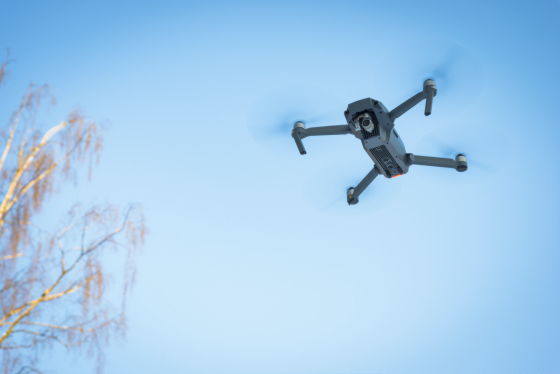It is pointed out that the United States is lagging behind China and Russia in drone manufacturing and military use and is not prepared for actual combat.

In modern warfare, bombing using drones is becoming commonplace, and factors such as drone manufacturing capabilities, training of soldiers to pilot them, and operational know-how are key to war. The New York Times, a US daily newspaper, pointed out that the US is lagging behind China and Russia in drone manufacturing capabilities and military use.
Drones Are Key to Winning Wars Now. The US Makes Hardly Any.
In June 2025, U.S. President Donald Trump signed several executive orders to strengthen drone capabilities in order to reduce dependence on China and other countries that dominate the commercial drone market. In response, Secretary of Defense Pete Hegseth announced a memorandum on July 10 that outlined investments to strengthen the drone industrial base.
Hegseth said outdated regulations and procurement processes had prevented U.S. commanders from buying drones and training their soldiers: 'We were mired in red tape while our adversaries were building millions of cheap drones.'
However, it will take a lot of time and money to develop a domestic industry capable of producing enough drones to meet the needs of the U.S. military. China-based DJI accounts for about 70% of global commercial drone sales, and other drone companies have far less manufacturing capacity. 'No one can match DJI. DJI can produce millions of drones a year, more than 100 times more than any other U.S. company,' said Bobby Sakaki, CEO of drone industry consultancy UAS NEXUS.
There are about 500 drone manufacturing companies in the United States, but most of them are startups with no manufacturing or sales track record, and their annual drone production is less than 100,000 units. The founders of these companies are developing their products in anticipation of the U.S. military introducing domestically produced drones, and the policy announced by Hegseth is expected to intensify competition.

In June 2025, an exercise was held between an American drone manufacturer and the US military, funded by the Department of Defense, with the aim of improving America's drone manufacturing capabilities and soldiers' drone combat capabilities. The exercise was divided into two parts: the drone manufacturer side, which would crash drones into designated targets, and the soldier side, which would block drones using machines that emit jamming signals. Since there were regulatory issues with conducting training while emitting jamming signals in a densely populated area, the exercise was conducted at a training site south of Fairbanks, Alaska.
The drone makers taking part in the exercise were funded by the Department of Defense, but the exercise highlighted challenges: drones made by startups such as Dragoon and AeroVironment suffered engine and navigation problems, as well as being jammed by soldiers, meaning most of them failed to hit their targets.
The exercise also showed that many of the jamming devices prepared by the soldiers were ineffective, indicating that the defense's countermeasures against drones were insufficient. Lt. Col. Scott Smith, head of the nonlethal effects branch of the 11th Airborne Division, which participated in the exercise, said the exercise highlighted how much effort Americans must put into preparing for a conflict involving drones.
The best performing drone in the exercise was manufactured by California-based startup Neros . Neros also has an office in Ukraine, which is in the midst of the war, and is conducting testing and development there. Neros' drone, Archer, avoided the soldiers' jamming devices by switching radio frequencies and hovered about 3 meters above the soldiers' heads.
Neros plans to deliver about 6,000 drones to Ukraine in 2025 alone, and some U.S. military officials have called it the best alternative to DJI. However, Neros' factory has about 15 workers who assemble the drones by hand, and the monthly production is only 1,500. Neros CEO and co-founder Soren Monroe-Anderson said he would like to increase production capacity to compete with DJI, but that this will be difficult to achieve. Monroe-Anderson said, 'DJI is far better than any other company in the world. That's why what we're doing is important.'
American drone manufacturers provided Ukraine with high-spec drones in the early stages of the war between Russia and Ukraine, but it has been reported that American drones are fragile and have many problems, and are unable to overcome Russian jamming and GPS jamming technology.
Ukraine switches to cheaper Chinese drones, saying American drones are too expensive and full of problems - GIGAZINE

Drone bombing has been used in the war between Russia and Ukraine, and Israel has also weaponized Chinese-made drones to attack Palestine.
Israel killing Gaza civilians with commercial drones, probe finds | Israel-Palestine conflict News | Al Jazeera
https://www.aljazeera.com/news/2025/7/14/israel-killing-gaza-civilians-with-commercial-drones-probe-finds
Roman Knyachenko, CEO of Ukrainian drone developer and manufacturer Skyeton , also accused European defense companies of falsifying 'combat-tested' certification for drones in areas far from Ukraine's front lines and trying to steal proprietary technology from Ukrainian drone companies.
Ukrainian Drone Pioneer Warns Of European Firms Faking Combat Tests And Pilfering Tech Secrets
https://dronexl.co/2025/07/13/ukrainian-drone-pioneer-warns-european-firms-faking-combat-tests/
Related Posts:
in Note, Posted by log1h_ik






